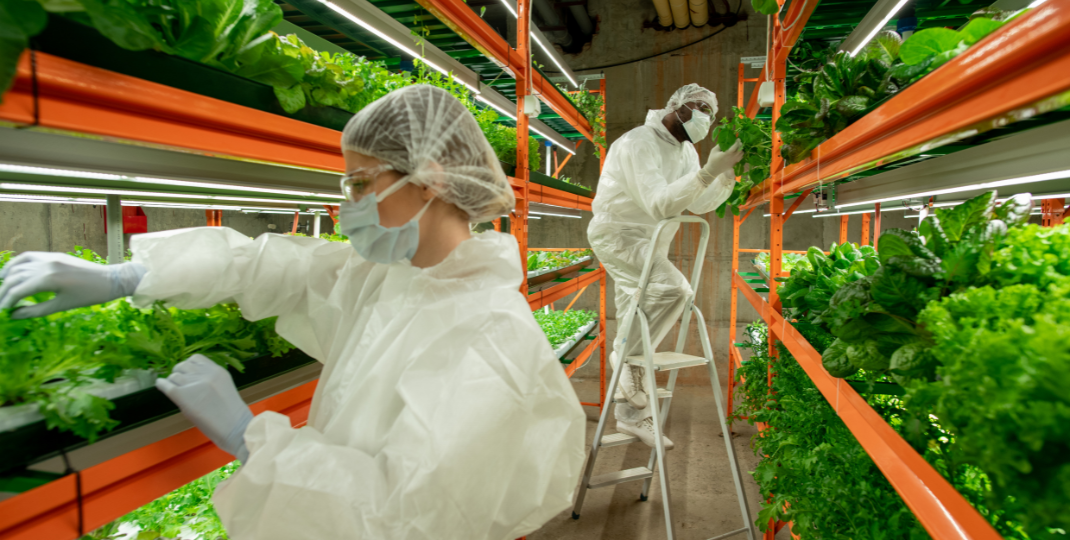Algal species have gained significant attention in recent years due to their potential as a sustainable source of lipids for various applications, including biofuel production. However, not all algal species are created equal when it comes to lipid extraction efficiency. Different types of algal species possess varying lipid content and composition, which can greatly influence the effectiveness of the lipid extraction process. Understanding how different algal species affect lipid extraction is essential for optimizing the production of valuable lipids from algae and ultimately maximizing the efficiency and sustainability of this promising renewable resource.
Understanding the Impact of Algal Species Properties on Lipid Content and Extraction Efficiency
The lipid content and extraction efficiency of different algal species are influenced by various properties such as cell wall composition, cell size, lipid droplet size and distribution, growth rate, and nutrient availability. Algal species with thinner cell walls are easier to break down during extraction, leading to higher lipid yields. Larger cells with more lipid droplets also tend to have higher lipid content, while faster-growing species may have a higher overall lipid production. Additionally, the availability of nutrients such as carbon, nitrogen, and phosphorus can impact lipid accumulation in algal cells, with nutrient-rich conditions generally leading to higher lipid content. Overall, understanding these specific properties of different algal species is crucial for optimizing lipid extraction efficiency in biofuel production processes.

How do variations in cell wall composition among algal species influence lipid extraction methods?
Variations in cell wall composition among algal species can greatly influence lipid extraction methods due to the different structural components present in the cell walls. For example, algal species with thick and rigid cell walls may require more intensive pre-treatment processes to break down the walls and release the lipids trapped inside. On the other hand, algal species with thin and flexible cell walls may be easier to extract lipids from using less harsh extraction methods. Additionally, some algal species may have unique cell wall properties, such as the presence of polysaccharides or proteins, which can hinder or enhance lipid extraction efficiency depending on the method used. Overall, understanding the specific cell wall composition of the algal species being processed is crucial for optimizing lipid extraction methods and maximizing yield.
Are there certain types of algal species that are more suitable for lipid extraction processes than others?
Yes, certain types of algal species are more suitable for lipid extraction processes than others. Some species have higher lipid content and produce lipids that are easier to extract, making them more efficient for use in biofuel production. Additionally, some species are able to grow rapidly in various environments, making them more cost-effective and sustainable options for lipid extraction processes. Researchers continue to study and identify specific algal species that are most suitable for lipid extraction in order to optimize the efficiency and viability of biofuel production.
How do environmental factors, such as temperature and nutrient availability, affect the lipid content of different algal species?
Environmental factors such as temperature and nutrient availability play a crucial role in determining the lipid content of algal species. Warmer temperatures generally lead to increased lipid production in many algae, as lipids serve as a protective mechanism against heat stress. Additionally, nutrient availability, particularly nitrogen and phosphorus, can also impact lipid accumulation in algae. In nutrient-rich environments, algae tend to allocate more resources towards growth and reproduction rather than lipid storage. However, in nutrient-poor conditions, algae may prioritize lipid synthesis as a way to store energy for survival during periods of limited resources. Overall, fluctuations in temperature and nutrient availability can significantly influence the lipid content of different algal species, with potential implications for their use in various applications such as biofuel production or pharmaceuticals.
What role do genetic differences play in determining the lipid extraction potential of various algal species?
Genetic differences among algal species can significantly impact their lipid extraction potential by influencing the composition and abundance of lipid-producing enzymes, proteins, and pathways within the cells. Certain genetic variations can enhance lipid production efficiency by increasing the expression of key genes involved in lipid biosynthesis or altering metabolic pathways to favor lipid accumulation. Additionally, genetic diversity can result in differences in the lipid profiles of different algal species, with some species producing higher quantities of desirable lipids for extraction purposes. Overall, genetic differences play a crucial role in determining the lipid extraction potential of various algal species by impacting their lipid production capabilities and compositions.

Do certain algal species require different extraction techniques or solvents for optimal lipid recovery?
Yes, certain algal species do require different extraction techniques or solvents for optimal lipid recovery due to variations in cell wall structures and lipid content. Some algal species have tough cell walls that require more aggressive extraction methods such as sonication or enzymatic treatments, while others may have higher lipid content that can be efficiently extracted using simple solvent extraction techniques. Additionally, the choice of solvent can also play a significant role in lipid recovery as different solvents have varying affinities for specific types of lipids. Therefore, it is important to tailor extraction methods and solvents based on the characteristics of the algal species being studied to achieve maximum lipid recovery.
How do the growth conditions of different algal species impact their lipid production and extraction yield?
The growth conditions of different algal species, such as nutrient availability, light intensity, temperature, and pH, can significantly impact their lipid production and extraction yield. Optimal conditions that promote rapid cell division and accumulation of lipids, such as high levels of nitrogen and phosphorus, adequate sunlight, and stable temperatures, can result in higher lipid content in the algae. Additionally, stress factors like nutrient deprivation or high salinity can trigger lipid accumulation as a survival mechanism, further increasing lipid production. The efficiency of lipid extraction from algal biomass also depends on these growth conditions, as well as the method used for extraction, such as solvent extraction or mechanical disruption. By understanding and optimizing the growth conditions for specific algal species, researchers and industry professionals can enhance lipid production and extraction yields for various applications, including biofuel production and nutraceuticals.
Are there any synergistic effects when combining different types of algal species in the lipid extraction process?
There are potential synergistic effects when combining different types of algal species in the lipid extraction process. By using a diverse mix of algae, each species can contribute unique qualities such as different fatty acid profiles or growth rates, which can enhance overall lipid productivity. Additionally, certain algae species may have complementary biochemical pathways that can increase lipid content or improve extraction efficiency when combined. Overall, the combination of different algal species in lipid extraction could potentially lead to a more efficient and effective process for producing high-quality lipids.
The Impact of Algal Species on Lipid Extraction Process
In conclusion, different types of algal species have varying effects on the lipid extraction process due to their unique biochemical compositions and structures. Some species may contain higher concentrations of lipids, making them more suitable for extraction processes, while others may require additional steps or specific techniques to extract lipids efficiently. Understanding these differences is crucial in selecting the most appropriate algal species for lipid extraction, ultimately impacting the overall efficiency and yield of the extraction process. Further research and development in this area are essential to optimize lipid extraction from various algal species for sustainable biofuel production and other applications.
